Any person working with electronics, either for hobby or professionally will have a large assortment of components and parts laying around.
I’d encourage anyone that will keep any kind of inventory of parts to invest some time in creating a system to keep track of the components you have, the location, and the ability to attach information and documents.
I went looking for an inventory management system, and I came across and tried a couple like PartBox, Bomist,etc
But none that really fit my needs, I had a few requirements that I was looking for:
- Good support for electronic components
- feature rich
- open source
- selfhosted
I found Partkeepr which fulfilled all my requirements.
(I encourage anyone looking to start with a new system, to look into InvenTree, the successor to PartKeepr. I might also switch over to this in the future)
Partkeepr
PartKeepr is an open-source inventory system with a focus on electronic components.
Selfhosted
I initially installed it on a Debian VM with the guide on the PartKeepr wiki. DO NOT USE THAT
I spent hours getting it to work, PartKeepr last update was 2018 and is not getting maintained anymore, the main issue I ran into is that the new PHP versions break PartKeepr.
You need to use an older PHP version to get it working..
Anyway, I got it working and started filling my database with components, locations, footprints, etc.
But after a few months, I kept getting errors and weird behavior and decided to “fix it” by starting fresh with a new install and transferring my database.
My second attempt was using this guide on getting it installed on Ubuntu.
This guide also addresses the issues with the old PHP version and some other things to look out for.
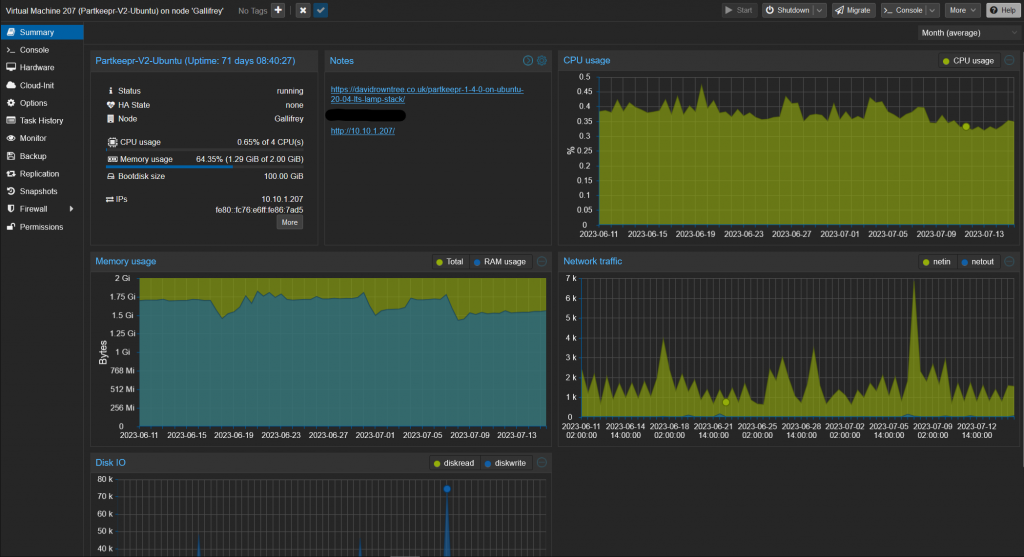
Categories
I started by splitting components into active/passive and then making subcategories whenever needed. This system serves me very well and allows me to quickly find the component I want.


Cyber security
Because PartKeepr is not being maintained anymore I cannot guarantee the login methods are up to date and secure.
I could setup a 2-factor authentication system but decided not to.
This would be another system I need to actively maintain to ensure security, and because PartKeepr only needs to be used by me I keep it internal and only accessible via VPN.
Storage places
I currently use 3 storage methods.
- organizing drawers
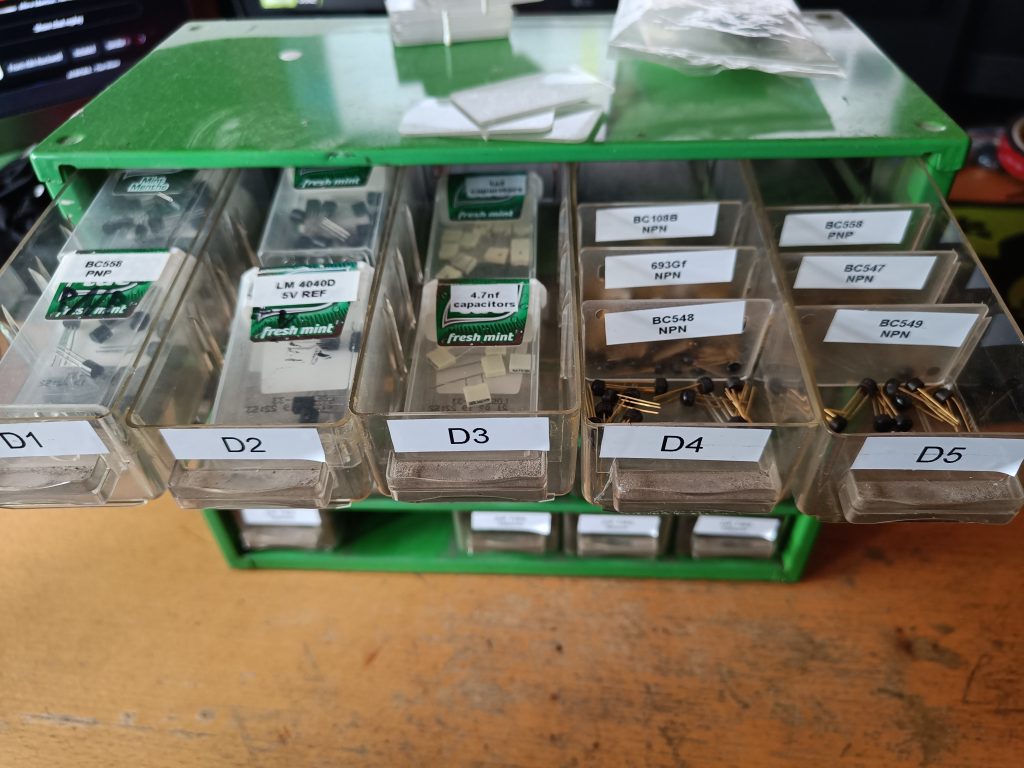
- Tic Tac boxes
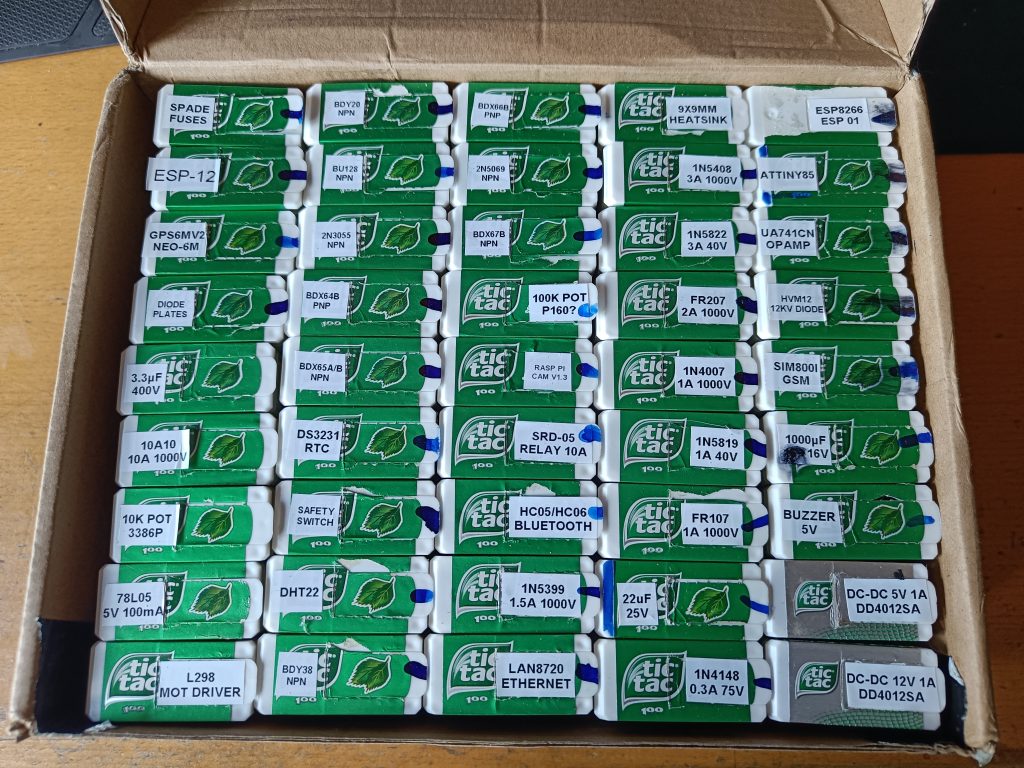
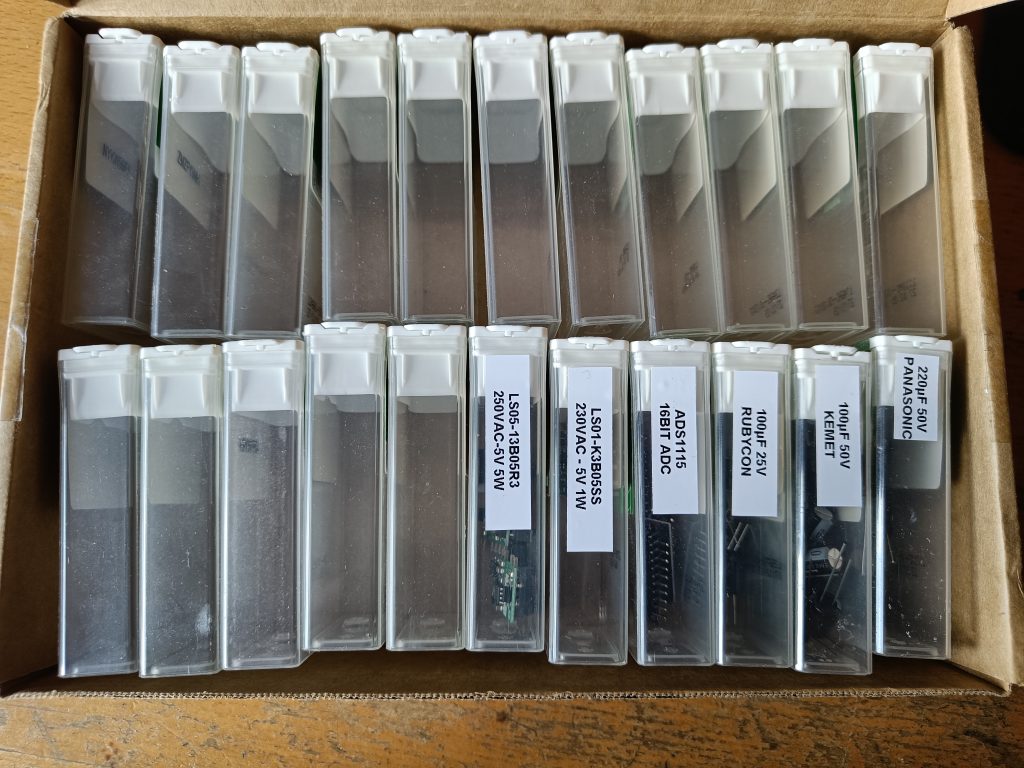
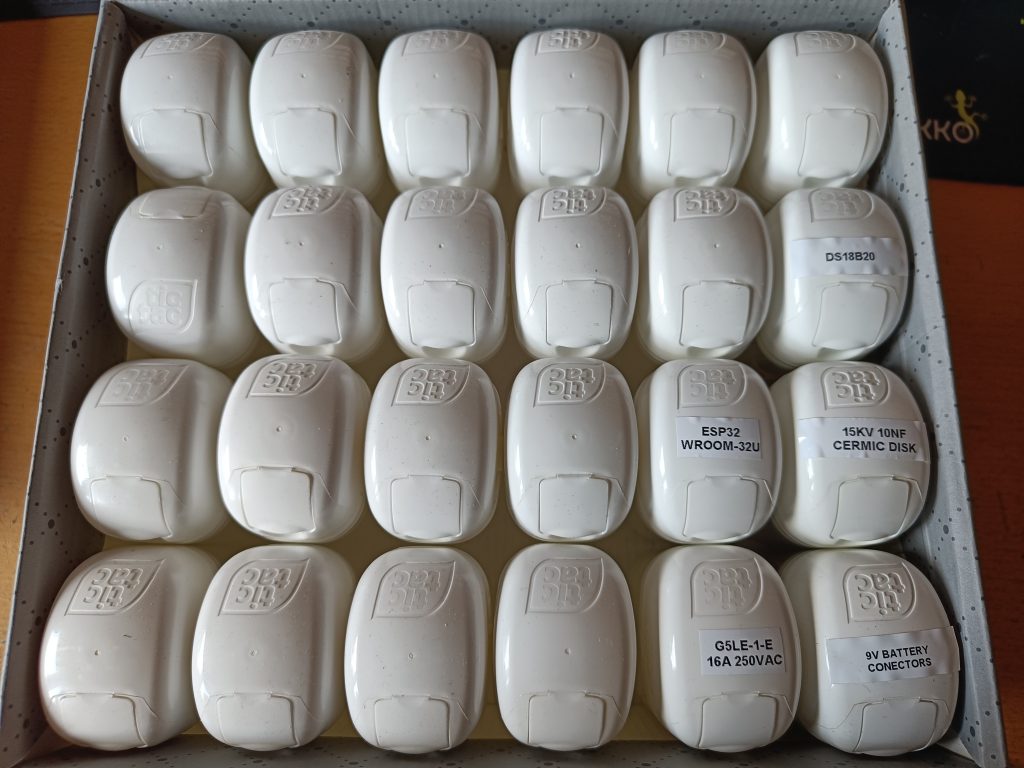
- Jewelry boxes for small items

ESD safety
To protect some electronic components from ESD damage I try to keep in mind how I store them. Although not as often as I should..
To properly protect against ESD you need a storage box or bag that is below a certain surface resistance to dissipate the charge.
- <10^3Ω = shielding
- <10^4Ω = conductive
- 10^4Ω -> 10^11Ω = static disipative
- >10^11Ω = insulative (not ESD safe)
Source: ANSI/ESD S541
these numbers vary a bit between sources, ANSI,ISO,IEC
The Tic Tac boxes I use are made of PP (polypropylene).
PP has a surface resistance of 10^13 and does not meet ESD requirements because of this.
I put ESD-sensitive parts in an extra anti-static bag or stick them on esd foam, and then put it in the tic-tac box for easy storage and cataloging.
